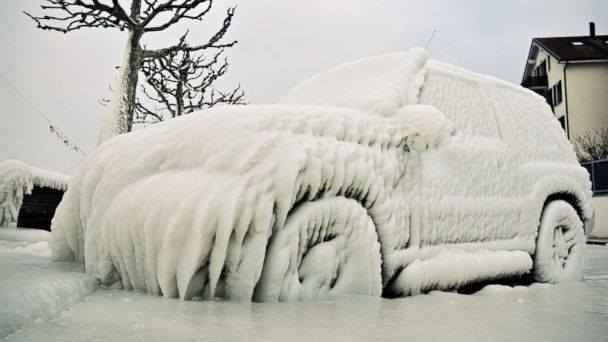Tittle : At what temperature does motor oil freeze?
Introduction:
As vehicle owners, we often pay close attention to the type and grade of motor oil we use, but how often do we consider the impact of temperature on this vital lubricant? One crucial aspect that often escapes our attention is the freezing point of motor oil. Just like any other liquid, motor oil has a temperature at which it solidifies, potentially compromising its ability to protect your engine. In this blog, we’ll delve into the fascinating world of motor oil freezing points, exploring the science behind it, the consequences of using frozen oil, and how to make informed choices to keep your engine running smoothly, even in the coldest climates. Join us as we uncover the mysteries of at what temperature motor oil freezes and why it matters for your vehicle’s well-being.
Composition of Motor Oil
Motor oil is a carefully formulated blend of base oils and additives. The base oils provide lubrication, while additives enhance specific properties, such as viscosity, thermal stability, and resistance to oxidation
Functions of Motor Oil:
- Lubrication: Motor oil reduces friction between moving parts, preventing wear and tear.
- Cooling: It absorbs and dissipates heat generated during engine operation.
- Cleaning: Motor oil helps to trap and suspend contaminants, preventing sludge buildup.
- Sealing: It forms a protective layer on metal surfaces, preventing leaks and maintaining a proper seal.
Viscosity and Grades:
Viscosity, a measure of the oil’s thickness, is crucial. Motor oils are labeled with viscosity grades, such as 5W-30 or 10W-40. The first number (e.g., 5W) indicates the oil’s viscosity in cold temperatures, while the second number (e.g., 30 or 40) represents viscosity at operating temperatures. Choosing the right viscosity grade is vital for optimal engine performance.
Synthetic vs. Conventional Oils
Motor oils come in two primary types: synthetic and conventional. Synthetic oils are engineered for superior performance, offering better temperature stability, resistance to oxidation, and overall protection. Conventional oils, while effective, may not provide the same level of performance under extreme conditions.
Demystifying the Freezing Point of Motor Oil: Key Insights for Vehicle Owners
As vehicle owners, we often prioritize choosing the right motor oil for optimal engine performance, but understanding the freezing point of this essential lubricant is equally crucial. Here’s a comprehensive guide to unravel the mysteries of the freezing point of motor oil.
1. What is the Freezing Point of Motor Oil? The freezing point of motor oil refers to the temperature at which the oil transitions from a liquid to a solid state. This property is vital, especially in colder climates, as it directly impacts the oil’s ability to lubricate and protect the engine.
2. Factors Influencing Motor Oil Freezing Points: Various factors contribute to the freezing point of motor oil. The oil’s composition, additives, and the ambient temperature all play critical roles. Generally, synthetic oils exhibit lower freezing points compared to conventional oils, providing better cold-weather performance.
3. Importance of Freezing Points in Cold Weather: In regions with harsh winter conditions, the freezing point of motor oil becomes a crucial consideration. When temperatures drop, motor oil with a lower freezing point remains fluid, ensuring that the engine components receive proper lubrication. This prevents engine damage and facilitates smooth starts in cold weather.
4. Effects of Frozen Motor Oil on Engine Performance: If motor oil solidifies due to extremely low temperatures, it can lead to inadequate lubrication, increased friction, and potential engine damage. Understanding the freezing point allows vehicle owners to make informed choices, preventing these issues and ensuring the longevity of their engines.
5. Synthetic vs. Conventional Oils in Cold Weather: Synthetic oils, engineered for superior performance, often have lower freezing points than conventional oils. They maintain better flow and viscosity in colder temperatures, making them a preferred choice for those facing extreme winter conditions. However, choosing the right oil viscosity grade remains crucial for overall effectiveness.
6. Additives and Cold-Weather Performance: Motor oil formulations often include additives designed to improve cold-weather performance. Pour-point depressants and viscosity index improvers are common additives that help lower the freezing point and enhance the oil’s ability to protect the engine in challenging weather conditions.
7. Tips for Cold-Weather Engine Care: Vehicle owners can take proactive measures to ensure optimal engine performance in cold weather. This includes using the recommended motor oil viscosity for specific temperature ranges, allowing the engine to warm up before driving, and parking in sheltered areas when possible.
Navigating the Chill: How Cold Temperatures Affect Motor Oil Performance
As vehicle owners, we often prioritize choosing the right motor oil for optimal engine performance, but understanding the freezing point of this essential lubricant is equally crucial. Here’s a comprehensive guide to unravel the mysteries of the freezing point of motor oil.
1. What is the Freezing Point of Motor Oil? The freezing point of motor oil refers to the temperature at which the oil transitions from a liquid to a solid state. This property is vital, especially in colder climates, as it directly impacts the oil’s ability to lubricate and protect the engine.
2. Factors Influencing Motor Oil Freezing Points: Various factors contribute to the freezing point of motor oil. The oil’s composition, additives, and the ambient temperature all play critical roles. Generally, synthetic oils exhibit lower freezing points compared to conventional oils, providing better cold-weather performance.
3. Importance of Freezing Points in Cold Weather: In regions with harsh winter conditions, the freezing point of motor oil becomes a crucial consideration. When temperatures drop, motor oil with a lower freezing point remains fluid, ensuring that the engine components receive proper lubrication. This prevents engine damage and facilitates smooth starts in cold weather.
4. Effects of Frozen Motor Oil on Engine Performance: If motor oil solidifies due to extremely low temperatures, it can lead to inadequate lubrication, increased friction, and potential engine damage. Understanding the freezing point allows vehicle owners to make informed choices, preventing these issues and ensuring the longevity of their engines.
5. Synthetic vs. Conventional Oils in Cold Weather: Synthetic oils, engineered for superior performance, often have lower freezing points than conventional oils. They maintain better flow and viscosity in colder temperatures, making them a preferred choice for those facing extreme winter conditions. However, choosing the right oil viscosity grade remains crucial for overall effectiveness.
6. Additives and Cold-Weather Performance: Motor oil formulations often include additives designed to improve cold-weather performance. Pour-point depressants and viscosity index improvers are common additives that help lower the freezing point and enhance the oil’s ability to protect the engine in challenging weather conditions.
7. Tips for Cold-Weather Engine Care: Vehicle owners can take proactive measures to ensure optimal engine performance in cold weather. This includes using the recommended motor oil viscosity for specific temperature ranges, allowing the engine to warm up before driving, and parking in sheltered areas when possible.
Navigating the Chill: How Cold Temperatures Affect Motor Oil Performance
Cold temperatures can be particularly unforgiving, and your vehicle’s motor oil isn’t exempt from the impact. Understanding how cold weather influences motor oil is crucial for maintaining peak engine performance in winter conditions. Let’s delve into the effects and optimal strategies to ensure your engine stays resilient in the cold.
1. Viscosity Challenges in Cold Weather: One of the primary concerns during cold weather is the impact on motor oil viscosity. Viscosity, or the thickness of the oil, tends to increase in colder temperatures. Thickened oil may struggle to flow efficiently, leading to delayed lubrication and potential engine wear during startup.
2. Engine Starting Challenges: Cold temperatures pose a challenge to engine starting. Thickened oil may not circulate quickly enough to provide immediate lubrication to critical engine components. This can lead to increased friction, wear, and strain on the battery and starter motor.
3. The Role of Motor Oil Additives: Many modern motor oils come fortified with additives designed to improve cold-weather performance. Pour-point depressants and viscosity index improvers are common additives that enhance oil flow at lower temperatures, ensuring smoother starts and efficient lubrication in cold conditions.
4. Choosing the Right Viscosity Grade: Selecting the appropriate motor oil viscosity grade for your vehicle and the prevailing temperatures is paramount. In colder climates, opting for a lower viscosity oil, such as a 0W or 5W, ensures better flow during startup. Refer to your vehicle’s manual for manufacturer-recommended oil viscosity.
5. Synthetic vs. Conventional Oils in Cold Climates: Synthetic oils generally outperform conventional oils in cold weather. Their molecular structure provides superior flow characteristics, maintaining proper lubrication even in frigid conditions. Consider using synthetic oils for improved cold-weather engine protection.
6. Pre-Warming the Engine: Allowing the engine to warm up before driving is a practical strategy in cold weather. This gives the motor oil time to reach optimal operating temperature, ensuring that it flows smoothly and provides effective lubrication to critical engine parts.
7. Protecting Your Engine in Extreme Cold: Extreme cold temperatures require additional precautions. Using an engine block heater can keep the oil and engine components warmer overnight, facilitating easier starts in the morning. Parking your vehicle in a garage or using a winter-grade oil can also offer added protection.
8. Regular Oil Changes: Regular oil changes are essential, especially in colder climates. Fresh oil with the right viscosity ensures optimal lubrication, and it eliminates the potential for sludge formation, which can impede oil flow in cold conditions
Cold-Weather Engine Starting: A Guide to Smooth Ignition in Chilly Conditions
Cold weather can present a formidable challenge when it comes to starting your vehicle’s engine. From sluggish starts to potential battery strain, understanding the dynamics of engine starting in cold temperatures is essential for maintaining a reliable and efficient vehicle. Here’s a comprehensive guide to help you navigate the nuances of engine starting in chilly weather.
1. The Cold Cranking Conundrum: In low temperatures, engine oil tends to thicken, creating resistance to movement within the engine. This resistance places an extra burden on the battery and starter motor during the crucial initial moments of ignition, leading to what is commonly known as “cold cranking.”
2. Choosing the Right Motor Oil: Opting for the appropriate motor oil viscosity grade for cold weather is paramount. Lower viscosity oils, such as 0W or 5W, flow more easily at lower temperatures, ensuring smoother starts. Synthetic oils, with their enhanced cold-weather performance, are often recommended for frigid climates.
3. Battery Health Matters: Cold temperatures can significantly reduce a battery’s efficiency. Ensure your vehicle’s battery is in top condition by checking its charge and replacing it if needed. Consider investing in a cold-cranking amp (CCA) rated battery designed for the specific demands of winter starting.
4. Pre-Warming Strategies: Allowing your engine to warm up before driving can make a significant difference in cold-weather starts. This not only gives the oil a chance to reach optimal viscosity but also helps raise the overall temperature of critical engine components.
5. Block Heaters and Battery Blankets: For extreme cold conditions, block heaters and battery blankets can be invaluable. A block heater warms the engine coolant, making it easier for the engine to start. Battery blankets provide warmth to the battery, ensuring it maintains sufficient charge.
6. Fuel System Considerations: Cold weather can affect the fuel system, causing fuel to become denser and potentially leading to poor vaporization. Using a fuel additive designed for cold weather can help prevent fuel line freezing and improve combustion efficiency.
7. Park Smart: When parking in cold weather, choose sheltered locations when possible. A garage or a carport can provide a protective barrier against extreme cold, making engine starting more manageable.
8. Anticipating Challenges: Be prepared for colder mornings by planning ahead. Keep essential items like an ice scraper, de-icer, and a portable jump starter in your vehicle. Taking proactive measures can prevent unexpected hassles.
Navigating the Chill: Tips for Choosing the Right Motor Oil in Cold Weather
As winter descends, selecting the right motor oil becomes a critical aspect of vehicle maintenance. Cold weather introduces unique challenges that demand careful consideration to ensure your engine operates smoothly and efficiently. Here’s a comprehensive guide to help you choose the optimal motor oil for cold-weather conditions.
1. Understanding Viscosity: Viscosity, a measure of oil’s thickness, is crucial in cold weather. Lower viscosity oils, often labeled with a “W” (e.g., 0W-20 or 5W-30), flow more easily at lower temperatures. This ensures prompt lubrication during cold starts, reducing wear and tear on vital engine components.
2. Synthetic vs. Conventional Oils: Synthetic oils are engineered to provide superior performance, especially in cold climates. They offer better flow characteristics at low temperatures and maintain their stability under extreme conditions. While synthetic oils may have a higher upfront cost, their benefits in cold weather can outweigh the expense.
3. Cold-Weather Additives: Look for motor oils with cold-weather additives, such as pour-point depressants and viscosity index improvers. These additives enhance the oil’s ability to maintain optimal viscosity in colder conditions, ensuring reliable engine lubrication during winter starts.
4. Consider Your Climate: The climate of your region should heavily influence your motor oil choice. If you experience harsh winter conditions with sub-zero temperatures, selecting an oil with a lower viscosity rating is crucial. Check your vehicle’s manual for the manufacturer’s recommendations based on your climate.
5. Multi-Viscosity Oils: Multi-viscosity oils, denoted by dual viscosity numbers (e.g., 10W-30), are versatile choices for cold weather. They offer improved flow during cold starts (the lower number) and maintain proper viscosity at operating temperatures (the higher number). This adaptability is particularly beneficial in variable winter conditions.
6. API Certification and Specifications: Always choose motor oils that meet or exceed the specifications outlined by the American Petroleum Institute (API) and your vehicle manufacturer. These certifications ensure that the oil has undergone rigorous testing and meets the necessary quality standards for optimal engine protection.
7. Read Your Vehicle’s Manual: Your vehicle’s manual is a treasure trove of information. It provides specific recommendations regarding motor oil viscosity, type, and change intervals based on the manufacturer’s engineering specifications. Following these guidelines ensures that your engine operates within optimal parameters.
8. Plan for Extended Change Intervals: In cold weather, the need for more frequent oil changes may arise due to increased engine strain during starts. Plan for shorter change intervals to maintain optimal oil performance and engine protection throughout the winter months.
Conclusion: Unveiling the Chilling Limits of Motor Oil
In conclusion, understanding at what temperature motor oil freezes is paramount for maintaining optimal engine performance, especially in cold weather. As we’ve explored the impact of freezing points on lubrication and overall engine function, it’s clear that choosing the right motor oil is more than a preference—it’s a strategic necessity.
Whether navigating icy winter roads or planning for extreme climates, the freezing point of motor oil guides our decisions to ensure that engines start smoothly and operate efficiently. By selecting oils with lower freezing points, incorporating cold-weather additives, and adopting proactive measures, we equip ourselves with the knowledge needed to face the challenges of freezing temperatures head-on.
In the subzero landscape, the right motor oil acts as a safeguard, protecting engines from the harsh realities of cold weather. So, as temperatures plummet, let this understanding empower you to make informed choices and ensure your vehicle’s heart remains resilient in the face of winter’s icy embrace.
Useful link
https://autochimps.com/does-motor-oil-freeze/
FAQs: Understanding Motor Oil Freezing Temperatures
Q1: At what temperature does motor oil freeze? Motor oil typically has a freezing point between -40°F and -20°F (-40°C to -29°C). However, the specific freezing point can vary based on the type of oil (conventional or synthetic) and its additives.
Q2: Does synthetic oil freeze at a different temperature than conventional oil? Yes, synthetic oils generally have lower freezing points than conventional oils. Synthetic oils are engineered for enhanced performance in extreme conditions, providing better cold-weather protection for your engine.
Q3: What happens if motor oil freezes in my engine? If motor oil freezes, it becomes less fluid, hindering its ability to lubricate engine components effectively. This can lead to increased friction, potential engine damage, and difficulties in starting the engine. Using the right motor oil for cold weather helps prevent these issues.
Q4: How can I prevent motor oil from freezing in winter? To prevent motor oil from freezing, choose an oil with a lower freezing point, such as a synthetic oil or one designed for colder climates. Using additives like pour-point depressants can also improve cold-weather performance. Additionally, parking your vehicle in a garage or using a block heater can help maintain warmer temperatures.
Q5: Can I mix different motor oils to prevent freezing? Mixing different motor oils is generally not recommended, as it can alter the oil’s properties and compromise its performance. Stick to using a single, recommended oil type for your vehicle and adjust the viscosity grade based on your anticipated temperature range.
Q6: Are there specific motor oils for extremely cold climates? Yes, some motor oils are formulated for use in extremely cold climates. These oils often have a lower viscosity and may include additives to improve cold-weather performance. Check the oil specifications and your vehicle’s manual for recommendations.
Q7: Does changing the oil viscosity grade help in colder temperatures? Yes, changing to a lower viscosity oil (e.g., 0W or 5W) in colder temperatures improves the oil’s ability to flow smoothly during startup. This ensures prompt lubrication and helps protect the engine components in chilly conditions.
Q8: Can I rely on antifreeze to prevent motor oil from freezing? Antifreeze is designed to protect the engine’s cooling system, not the motor oil. While antifreeze may indirectly influence the engine’s overall temperature, it does not prevent the oil from freezing. Using the appropriate motor oil for cold weather remains essential.
Q9: What should I do if I suspect my motor oil has frozen? If you suspect your motor oil has frozen, it’s advisable to warm the engine before attempting to start it. This can be done by using a block heater or allowing the vehicle to idle for a few minutes. If you encounter persistent issues, consult a professional mechanic.
Q10: Can I use the same motor oil year-round in varying temperatures? While some motor oils are designed for use in a broad temperature range, it’s often beneficial to switch to an oil with a lower viscosity in colder temperatures. Check your vehicle’s manual for recommendations based on the anticipated temperature conditions in your region.





Leave a Reply